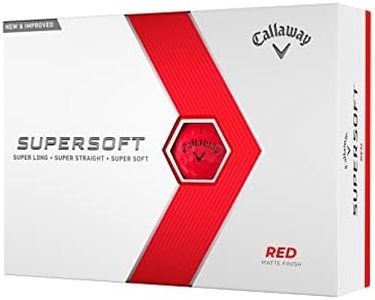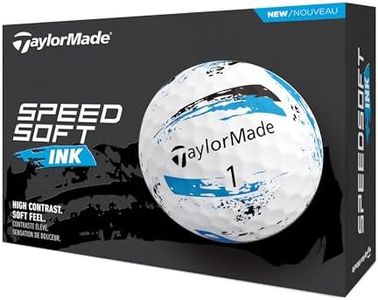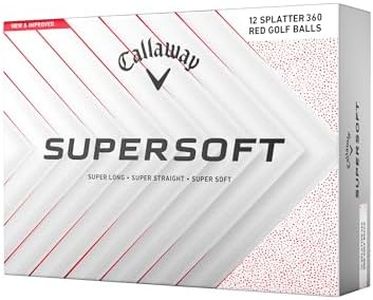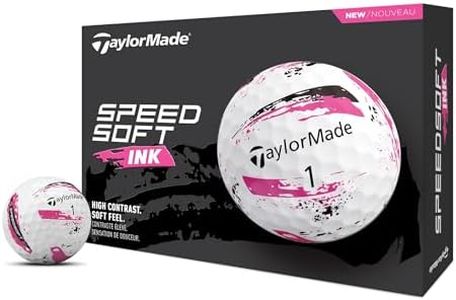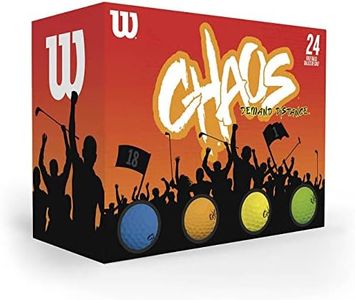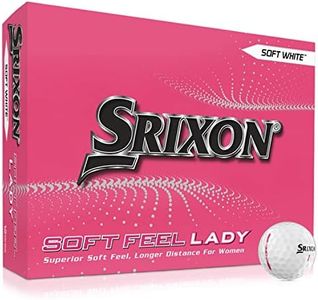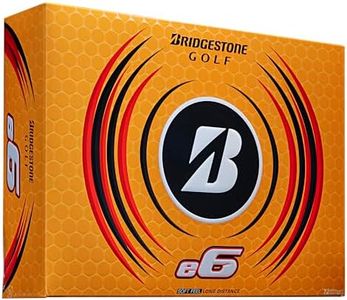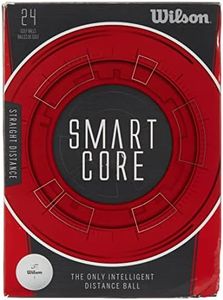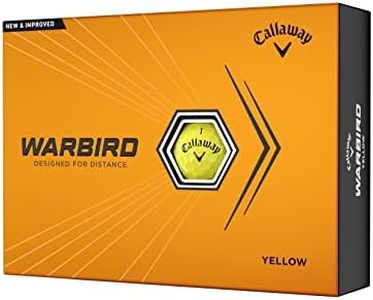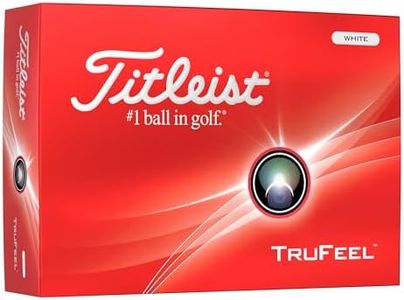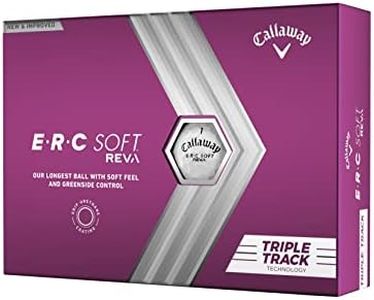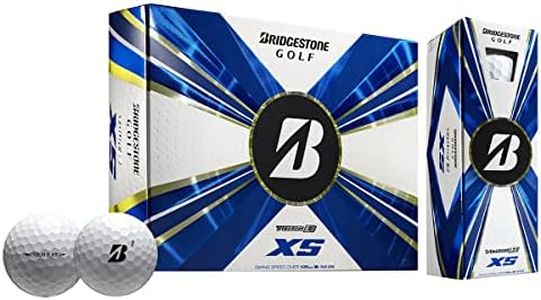We Use CookiesWe use cookies to enhance the security, performance,
functionality and for analytical and promotional activities. By continuing to browse this site you
are agreeing to our privacy policy
10 Best Ladies Golf Balls
From leading brands and best sellers available on the web.Buying Guide for the Best Ladies Golf Balls
Choosing the right ladies’ golf balls can noticeably improve your performance and enjoyment on the course. Golf balls might all look similar, but their internal construction, outer feel, and performance can vary greatly depending on a player’s swing speed, skill level, and personal preference. When picking golf balls, consider how they match your playing style—distance, control, and feel are all aspects that matter. Knowing the essential features will help you focus on what actually benefits your game.CompressionCompression refers to how much the golf ball deforms when it is struck. This is important because it affects the feel and distance of your shots. Lower compression balls (usually rated between 40 and 70) are softer and require less force to compress, making them easier to hit for players with slower swing speeds, which is common among many women golfers. Higher compression balls (above 80) are suited for faster swing speeds and typically offer more control but can feel harder. If your swing speed is on the lower side, a low-compression ball will help you get more distance and a softer feel, whereas if you swing faster, you might opt for a mid- or high-compression ball for better control.
Cover MaterialThe cover material of a golf ball affects its feel and durability. The two main types are Surlyn and urethane. Surlyn covers are firm, very durable, and provide more distance; they also tend to be less expensive. Urethane covers are softer, give more spin and control around the greens, and usually feel softer off the clubface, but may not last as long. If you prioritize durability and distance, go for Surlyn. If you care more about touch and control for approach shots and putts, urethane might suit you better.
Ball Construction (Layers)Golf balls can be made of two, three, or more layers, which affects their performance. Two-piece balls (core and cover) are most common for beginners and recreational players—they are more forgiving and offer maximum distance. Three-piece (or more) balls offer more control and can generate more spin, which helps with shaping shots and stopping the ball on the green. If you’re new or prioritize straight, long shots, stick with a two-piece design. If you’re comfortable with your swing and want more control, you might experiment with multi-layer balls.
FeelFeel describes the softness or firmness of a ball when you strike it with your club, especially on short shots and putts. Some golfers prefer a soft feel for better touch and feedback around the greens, while others like a firmer feel for more distance and a solid impact. Golf balls marketed for women typically offer a soft feel, which can help with confidence in the short game. Try to think about which sensation gives you comfort and better results in your game, and choose accordingly.
SpinSpin is the ability of the golf ball to rotate backward or sideways after hitting the ground, affecting how you control the ball on approach shots and chips. Low-spin balls usually fly straighter and generally roll farther, making them great for maximizing distance and reducing slices or hooks. High-spin balls help the ball stop quickly on the green and are advantageous for precise control, especially for skilled players. Beginners and those working on consistent distance might focus on lower-spin balls, while players comfortable with controlling the ball’s movement can look into higher-spin options.
VisibilityGolf balls come in various colors and finishes, which can impact how easily you track them in flight and spot them in the rough. Some women prefer colored or matte-finish balls for better visibility in different lighting or grass conditions. Choose a color or finish that stands out best to your eyes, ensuring you spend more time playing and less time searching for your ball.
